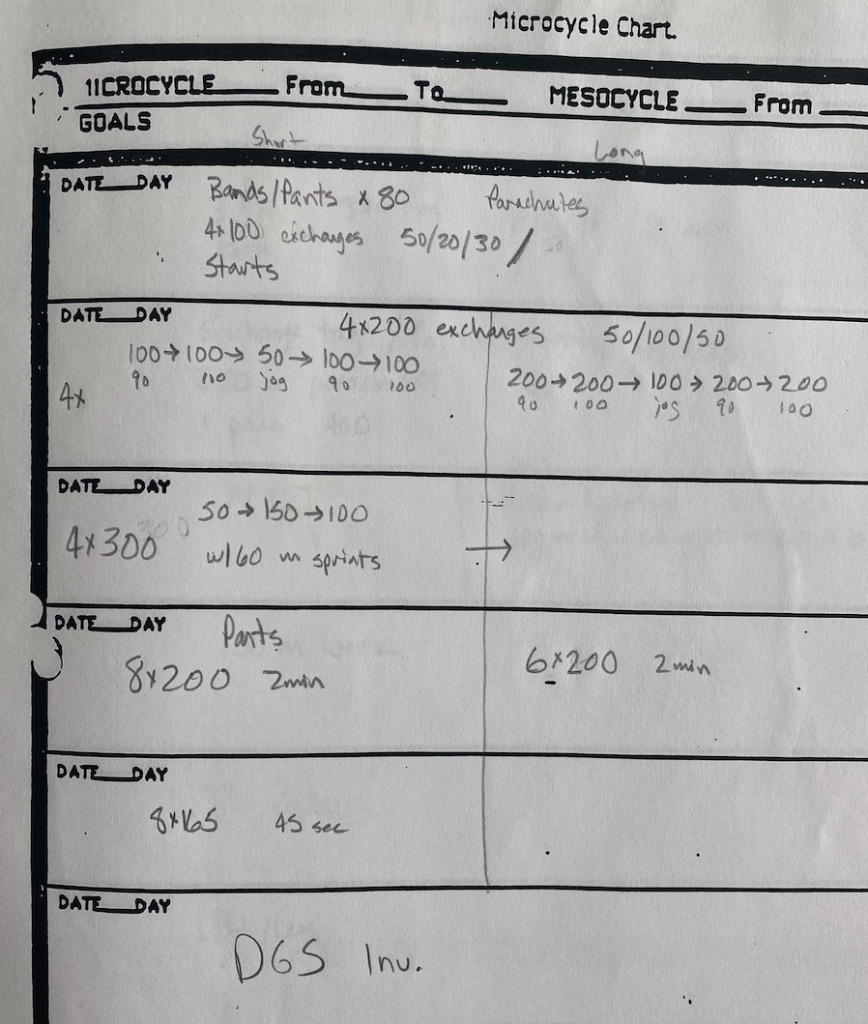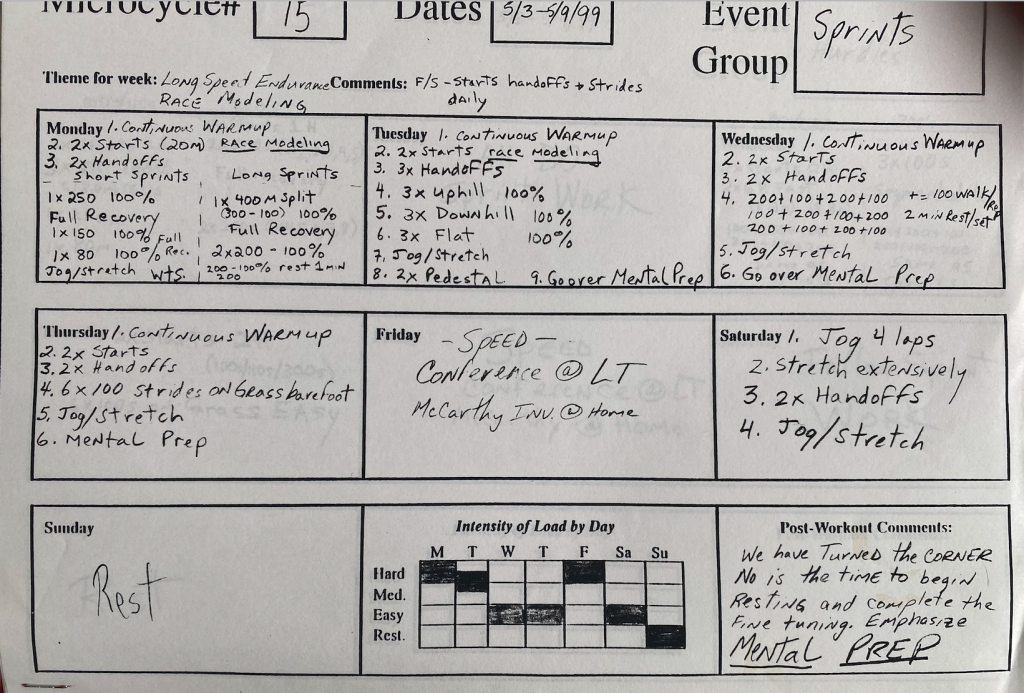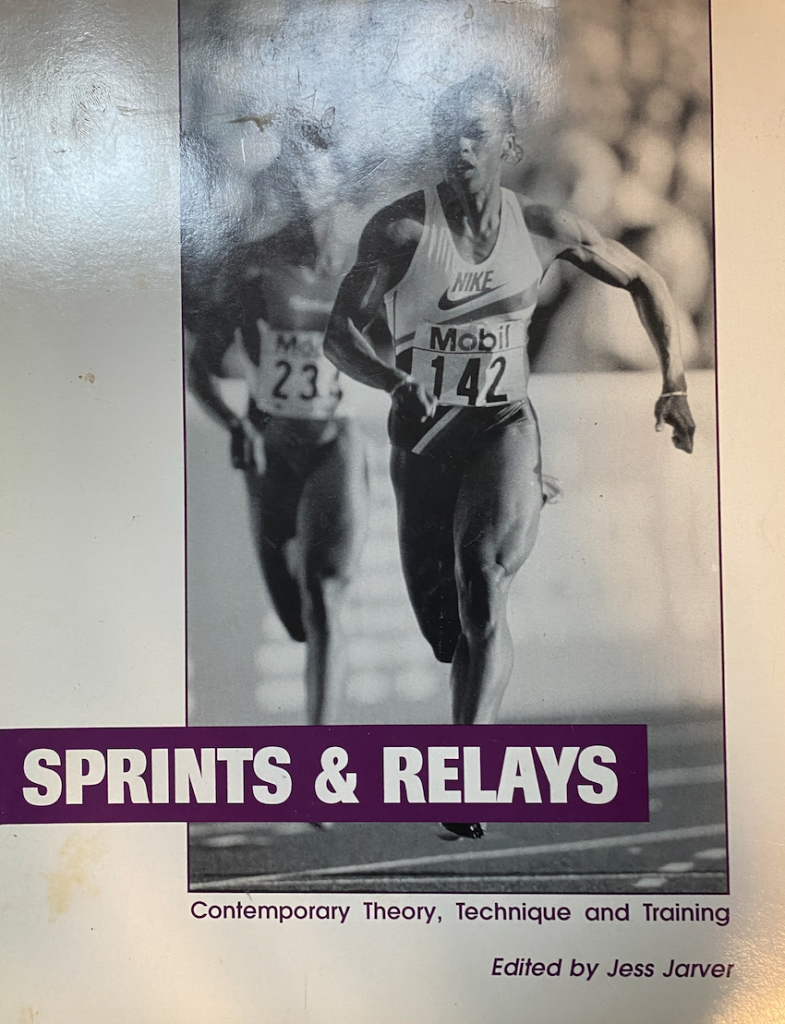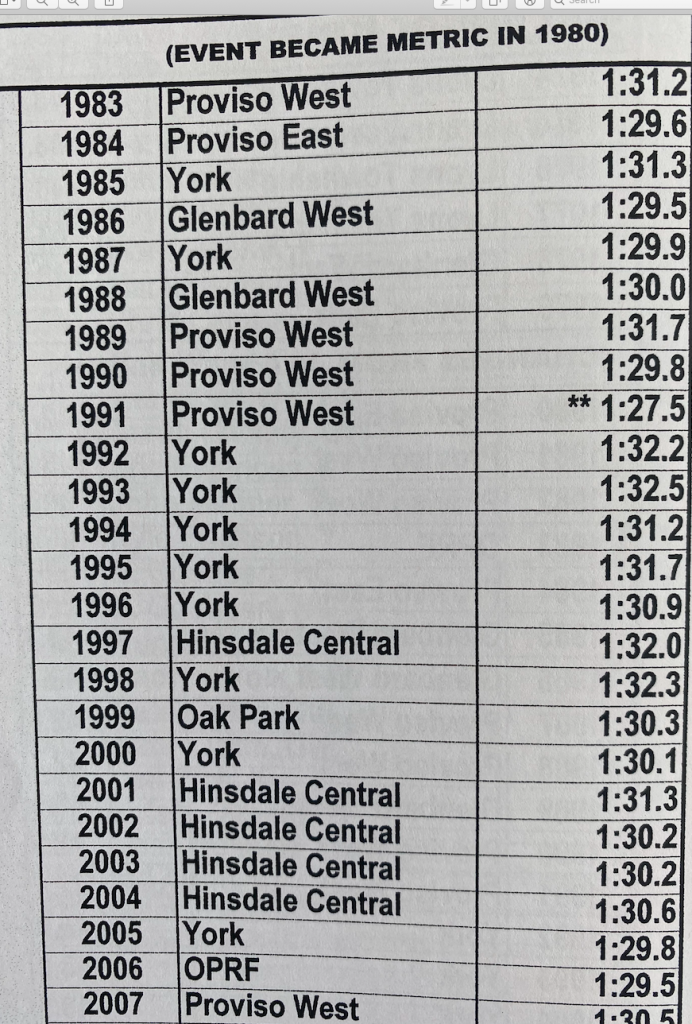
The Education of Chris Korfist Chapter Four
In my first three chapters of this series, you’ve probably been shocked at the absence of much talk about sprint training. I WAS A WEIGHT ROOM GUY. Up until this point in my career, I wore three different hats. I was a football coach, a strength coach, and a track coach.
The WEIGHT ROOM was the foundation for the other two programs. If weight room numbers went up, we would see improvements in speed. This was mainstream thought in the strength and conditioning world.
The foundation of speed was the squat. If our squat numbers increased, we would see faster athletes using conventional track workouts.
My track workouts were of the copy and paste variety. My workouts came from a course created by Vern Gambetta and Gary Winckler. I saw Loren Seagrave and Kevin O’Donnell of Speed Dynamics at a conference and was blown away. So, I had my drills and workouts.
My mindset was the traditional, harder the better… outwork your opponents.
A weekly workout would include repeat 200’s. As the season progressed, we would increase reps and decrease rest time. Every fourth week, we would cut back. We ran varying distances, but we never took more than three minutes of rest. Block work and exchanges were done the day before a meet. Here are some examples of my workouts.


To make myself feel more confident, I went through a period of confirmation bias. I sought out coaches who had fast guys who were also good squatters. I liked sprinters who had big numbers in the weight room, like Ben Johnson. I studied Charlie Francis.
I bought the books, sent emails, and found new workouts. I replaced old workouts with newer workouts. I started to program ins and outs, intensive to extensive.
My priorities had not changed. I was still… (1) FOOTBALL, (2) STRENGTH, (3) TRACK. But then I got my first taste of the nectar from the gods.


My first taste of that nectar from the gods was a 4×200 win the West Suburban Conference Meet. I was standing on the 50 yard line on the visitors side of the field trying to figure out who was where with all of the staggers. It seemed close. As it was all shaking out, I couldn’t believe that we were coming into the final exchange in first place. It was a rush like I felt when I played football, not so much coaching football.
I’ve always thought football had too many intangibles. Those intangibles kept coaches from seeing a direct connection between inputs and outputs. I couldn’t coach size. Getting eleven people to do their jobs in synch would never reflect what we had accomplished in the weight room.
Track was simple. We were a team with low expectations and we had created something good. We shocked everyone. In track, I had a direct effect on the outcomes. And when we won, it fed the drive. Winning begets winning. As we won more in track, I liked coaching track more and more. When I was new to the job, the outgoing coach told me, “You will never be any good.” That brief conversation had always been a driving force for me.
So far, we had gotten better based on enthusiasm and hard work. To feed my new addiction, I had to find ways to get my teams to sprint faster. While I was confident in creating and experimenting in the weight room, I needed to start getting creative on the track. I wanted to become more streamlined and efficient. This resulted in some hard decisions based on the data I had been collecting.
Some of my favorite exercises, ideas and philosophies had to be challenged and possibly deleted.
Could I replicate the results every year? Could I take a decent athlete and make them all-state? That was my new plan. ALL-STATERS EVERY YEAR.
It became an obsession.
